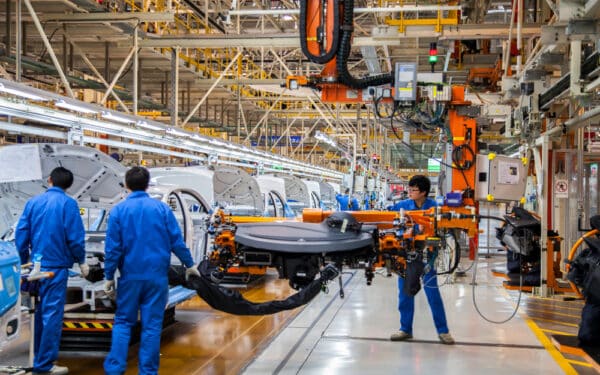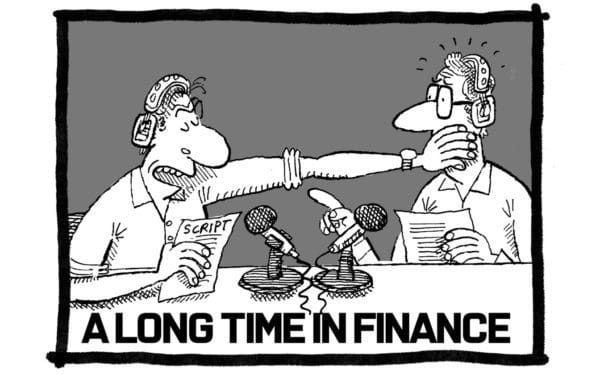A personal view from Ian Stewart, Deloitte’s Chief Economist in the UK.
To subscribe and/or view previous editions just google ‘Deloitte Monday Briefing’.
Industrial policy is back in fashion. One thing on which US Republicans and Democrats do agree is the need to support key industries through tax breaks, subsidies and import controls. The EU seems to be moving in the same direction. The UK Labour party is promising a new era of industrial policy if it wins the election of 4 July.
Industrial policy involves governments intervening against market forces to promote certain industries, firms or technologies. The period between 1945 and the early 1980s was the heyday of industrial policy. Governments spent vast sums trying to protect mature industries, such as shipbuilding, steel and car making, and develop the industries of the future. Many European countries nationalised what they saw as strategic industries. By the late 1970s, a swathe of the UK economy was state-owned, covering everything from shipbuilders to carmakers, airlines, steel producers, aerospace, gas, electricity and water companies.
Industrial policy fell out of favour in the 1980s. Despite heavy subsidies, too many state-owned or subsidised industries remained uncompetitive and unloved by consumers. By the late 1970s – and I remember this well – state-owned carmaker, British Leyland, had a towering reputation for industrial unrest and making unreliable cars. The focus, especially in the US and UK, shifted to cutting subsidies, privatising state-owned industries and stepping back from intervening in markets. With its single market programme, the EU adopted a markedly more pro-market approach. But this was an issue of degree rather than sacred principle. Even avowedly pro-market governments such as Mrs Thatcher’s were willing to override the market in what they saw as the national interest, for instance, by providing subsidies to Japanese car manufacturers to set up in the UK.
A confluence of factors has led to the revival of interest in industrial policy. De-industrialisation has heightened regional and income inequalities and fuelled political dissent, seen most clearly in the rise of Donald Trump and Brexit. The notion, widespread for 20 years, that free markets and globalisation would raise prosperity for all, has taken a battering. The pandemic highlighted the fragility of supply chains and importance of strategic sectors such as semiconductors. The invasion of Ukraine has reinforced the message, demonstrating that wars are as much a test of industrial and technological capacity as of fighting power. In the wake of the invasion of Ukraine, western countries are seeking to create greater autonomy and security in the provision of energy. Finally, China’s desire to lead in the industries of the future raises concerns about the future prosperity of the West.
Proponents of industrial policy argue that the market, unaided, has failed to meet these challenges. They see a need for more activist government, in coordinating, subsidising and shaping the industrial sector. President Biden has emerged as the West’s most enthusiastic proponent of industrial policy. The US CHIPS and Science Act and the Inflation Reduction Act provide billions of dollars in funding for the domestic production of semiconductors, R&D and clean energy technologies. The Biden administration has also recently introduced heavy tariffs on Chinese electric vehicles, batteries and solar panels.
So, in designing policies today, what can governments learn from the past? The US think tank, the Peterson Institute for International Economics, has analysed 50 years of US industrial policy to establish what works and what doesn’t. The Institute examined 18 high-profile cases since 1970 covering subsidies, restrictions on imports and support for research and development.
There were significant successes, the greatest of which has been the US Defense Advanced Research Projects Agency (DARPA). President Eisenhower created the agency to maintain US military superiority in the wake of the Soviet launch of its Sputnik space programme in 1957. DARPA operates by awarding R&D grants to academic and industry partners. As well as purely military technologies, DARPA has directly and indirectly, been instrumental in the development of breakthroughs including weather satellites, global satellite navigation, the internet, high-definition TV and semiconductors.
The Petersen Institute rates two other R&D programmes highly. The North Carolina Research Triangle Park, launched in 1960, boasts good infrastructure, competitive tax rates, a large pool of educated workers and three universities. The Triangle has attracted hundreds of tech firms. In 2020 President Trump announced Operation Warp Speed, a public-private partnership to discover and make vaccines. The government committed to making large purchases, subsidised production capacity and connected research facilities with manufacturers. Within seven months, Warp Speed had led to the development and approval of four new vaccines. By any measure, the programme was a resounding success.
DARPA, The North Carolina Research Triangle Park and Warp Speed were judged by the Petersen Institute to have succeeded in creating jobs, making the industry more competitive and advancing technology. These successes relied on fostering competition within the private sector, with science and engineering experts, not politicians, awarding grants and encouraging promising, high-risk R&D.
Another industrial policy success, albeit of a quite different sort, was the use, by the state of Alabama, of tax breaks and subsidies to persuade Mercedes-Benz to build an assembly plant in the state in the 1990s. In a similar vein, the Petersen Institute rates the federal bailout of Chrysler, one of the big three US automakers, in 1980, a success. The government’s loan secured over one-third of a million jobs. Under the charismatic leadership of Lee Iacocca, Chrysler cut costs, launched new models and returned to profit. Within three years, the federal government was able to redeem its loan and make a profit.
But “picking winners” is a risky business. In three of the six examples examined in the Petersen study the firms that received subsidies, and their technologies, were failures. As the report notes, “targeting a single firm to carry the mission rarely succeeds…policymakers should be wary of designating a single firm to advance a technology”.
The verdict on trade protectionism is equally sceptical. Protection for US steel, textiles and clothing, semiconductors and solar panels did not create competitive industries nor did they do much to advance the technological frontier. The exceptions were when trade barriers prompted Toyota and, later, Taiwan Semiconductor Manufacturing Corporation (TSMC) to build plants in the US.
So what lessons can policymakers draw from all of this?
Protectionism tends not to pay off. It imposes significant costs and the respite from competition rarely results in the creation of export winners. Policymakers need to be alive to the risks that industrial policy, even when successful at creating jobs, does so at a high cost. Moreover, jobs created in one area may lead to job losses in another. As the Petersen Institute observes, there are “far better policies…available for creating jobs on a national level…for example, on-the-job training and earned income tax credits”. Picking winners is a hit-or-miss business and relying on a single company to deliver a technology rarely works. Judicious direction of support by experts, in a competitive process, tends to yield the best results.
In the UK the track record of industrial policy in the 1970s is poor. It gave us failures like British Leyland, a technological breakthrough, Concorde, that lost money and a signal triumph in the form of the rescue of Rolls-Royce in 1972. But it failed in its aim of creating a more dynamic, successful industrial base.
With industrial policy back in vogue policymakers have much to learn from the past.
Write to us with your comments to be considered for publication at letters@reaction.life




